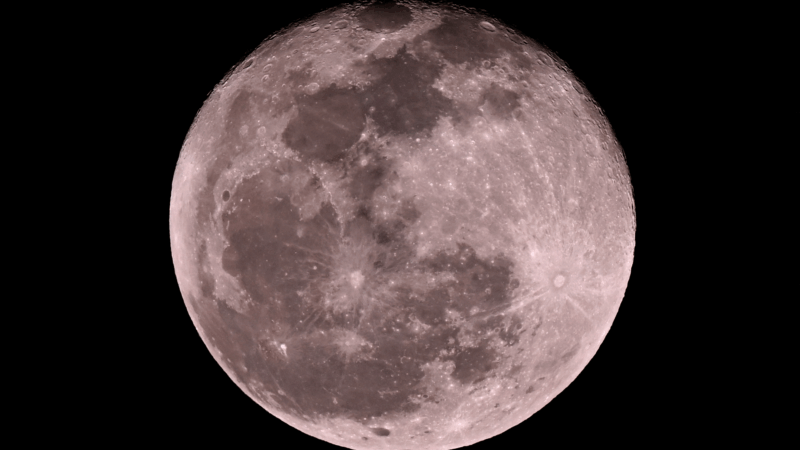A ‘black moon’ will appear in the sky this weekend, but you won’t see it. Here’s why
There are “blood,” “super” and “blue” moons, and then there’s the “black” moon.
The “black moon,” a rare phenomenon that occurs during a new moon phase of the lunar cycle, will occur this weekend. But don’t get your hopes up too much, scientists say, because it will be technically invisible.
Here’s what to know.
What is it?
When the moon is nearly between Earth and the sun, one side of the moon faces the sun, and that side is illuminated, but the side the Earth sees is dark. This is called the new moon phase of the lunar cycle — when the moon isn’t visible at night.
During this phase, the illuminated side of the moon is not only facing away from Earth, but it is also up in the sky during the daytime and rises and sets at the same time as the sun, according to NASA. The moon is gravitationally locked with Earth, meaning we always see the same side of the moon from Earth.
It’s unclear when it was coined, but “black moon” is an unofficial astronomical term. A new moon is considered by some to be a black moon one of two ways. It can happen when a new moon appears twice in one month (new moons usually happen once per month) or when there are four new moons in one season. When there are four new moons in one season, the third new moon is called a “black moon.”
Saturday’s black moon is the third new moon of the summer season. The fourth new moon will occur on Sept. 21, one day before the first official day of the fall season or autumnal equinox in the Northern Hemisphere — when the sun moves directly over the equator, creating equal amounts of daylight and night time.
You won’t see it
You won’t be able to see the black moon, but it will still be there in the sky. Since the illuminated part of the moon will be facing away from Earth, the moon will appear to be invisible in the night sky.
However, this is a great opportunity to stargaze and see the Dumbbell Nebula (M27), known for its dumbbell-like shape, which can be seen with a telescope between the Altair and Deneb stars, according to NASA.
When is the next “black moon”?
The next black moon is set to occur Aug. 31, 2027, according to Space.com. That new moon will be the second new moon phase in one calendar month.
Light from satellites will ruin majority of some space telescope images, study says
Astronomers have long been concerned about reflections from satellites showing up in images taken by telescopes and other scientific instruments.
Defense Department is reviewing boat strike video for possible release, Hegseth says
In a speech on Saturday, Defense Secretary Pete Hegseth defended the strikes, saying: "President Trump can and will take decisive military action as he sees fit to defend our nation's interests."
Bama, Miami in, Notre Dame out and Indiana No. 1 in College Football Playoff rankings
Nobody paying attention for the past 24 months would be surprised to see Indiana – yes, Indiana – leading the way into this year's College Football Playoff.
McLaren’s Lando Norris wins first F1 title at season-ending Abu Dhabi Grand Prix
Red Bull driver and defending champion Max Verstappen won the race with Norris placing third, which allowed Norris to finish two points ahead of Verstappen in the season-long standings.
A ban on feeding pigeons ruffles lots of feathers in Mumbai
The pigeon population has exploded — a result of people feeding the birds. For some it's a holy duty and a way to connect to nature. Critics point to health risks tied to exposure to pigeon droppings.
UN humanitarian chief: world needs to ‘wake up’ and help stop violence in Sudan
The UN's top humanitarian and emergency relief official has told NPR that the lack of attention from world leaders to the war in Sudan is the "billion dollar question".








